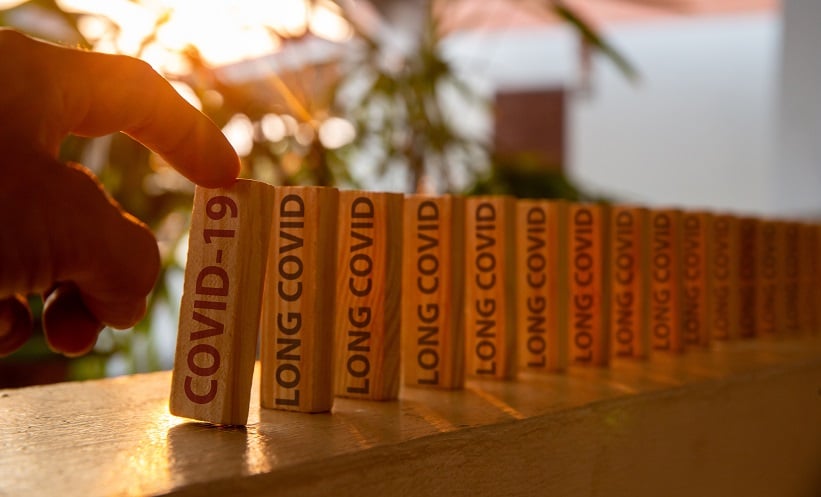Author: Josep-María Ribera1
1. Clinical Hematology Department, ICO-Hospital Germans Trias i Pujol, Josep Carreras Research Institute, Badalona, Spain
*Correspondence to [email protected]
Disclosure: Ribera has received consulting fees from Incyte, Pfizer, Bristol Myers Squibb, Novartis, and Takeda; payment or honoraria for lectures, presentations, speakers, bureaus, manuscript writing, or educational events from Incyte, Pfizer, Bristol Myers Squibb, Novartis, and Takeda; and grants or contracts from Amgen, Incyte, and Pfizer.
Keywords: Acute lymphoblastic leukaemia (ALL), immunotherapy, Philadelphia chromosome, tyrosine kinase inhibitors (TKI).
Citation: EMJ Hematol. 2025;13[1]:27-30. https://doi.org/10.33590/emjhematol/OOJT7345
![]()
IN RECENT YEARS, significant improvements have been achieved in the management of children and adults with either Philadelphia (Ph) chromosome-positive or negative acute lymphoblastic leukaemia (ALL). The most important have been the incorporation of immunotherapy in newly diagnosed patients and the incorporation of new monoclonal antibodies and CAR-T constructs in the treatment of relapsed or refractory (R/R) patients. In Ph-positive ALL, new tyrosine kinase inhibitors (TKI) are being incorporated in first-line treatment, and the role of haematopoietic transplantation is being redefined. On the other hand, advances in T-ALL are still modest, the most promising being the CAR-T use in R/R patients.
PHILADELPHIA CHROMOSOME-NEGATIVE ACUTE LYMPHOBLASTIC LEUKAEMIA
The most important advances in Ph-negative ALL come from the incorporation of immunotherapy into first-line ALL. In this sense, Dinner et al.1 analysed the outcomes of the addition of blinatumomab to consolidation therapy in 132 younger adults (30–54 years) with BCR::ABL1-negative B-acute lymphoblastic leukaemia enrolled in the ECOG-ACRIN E1910 Phase III trial. For the 66 patients randomised to receive blinatumomab during consolidation, the overall survival (OS) was better than that of the control group (92% for blinatumomab versus 67% for chemotherapy [hazard ratio (HR): 0.20; 95% CI: 0.08–0.54; p=0.002]).1 This significant advantage was also observed in the following patients’ subgroups: those aged 30–39 years and those with a Ph-like phenotype.1 These results reinforce the need to include blinatumomab in the consolidation regimen in young adults with newly diagnosed Ph-negative ALL.
Single-agent subcutaneous blinatumomab is a new compound that has promising efficacy in ALL. It was proven to be well-tolerated and effective in the Phase I study in adult patients with R/R Ph-negative ALL.2 Jabbour et al.3 presented the results of a Phase I/II extension study consisting of 88 patients who were separated into two dose level cohorts: 1) 250 μg once-daily (QD) for Week 1 of cycle 1 and 500 μg thrice-weekly (TIW) thereafter (250/500), or 2) 500 μg QD and 1,000 μg TIW (500/1,000). The drug was shown to be effective in both cohorts: CR (complete remission)/CRh (CR with partial haematologic recovery)/CRi (CR with with incomplete haematologic recovery)rate was 89% and 92% with measurable residual disease (MRD) negativity in 91% and 90% of responders in cohort 1 and cohort 2, respectively.3 The estimated 12-month OS rate was 62.7% and 69.7% in 250/500 and 500/1000, respectively.3 The rates of Grade ≥3 cytokine release syndrome were 17% and 23% and those of neurologic events (including ICANS) were 28% and 27%, for 250/550 and 500/1000 cohorts, respectively.3 No fatal treatment-related adverse events were observed, and adverse events were managed with blinatumomab interruption and/or supportive care measures, without the need for SC blinatumomab discontinuation.3 Notably, the FDA has selected the 250/500 dose for further trials. In summary, single-agent SC blinatumomab resulted in high efficacy, with a high MRD-negativity rate, and an acceptable safety profile, and will be investigated in Phase II and Phase III studies.3
Stock et al.4 retrospectively analysed outcomes in patients with R/R B-cell ALL receiving inotuzumab ozogamicin (InO), stratified by cumulative dose received (≤3.3 mg/m2; 161 patients versus >3.3 mg/m2; 177 patients). Among responders, improved progression-free survival (PFS)/OS outcomes were observed in patients from the ≤3.3 mg/m2 group, a feature attributed to a greater number of patients who proceeded to haematopoietic stem cell transplantation (HSCT).4 The risk of post-HSCT sinusoidal obstruction syndrome between dose groups appeared similar, but the incidence of post-HSCT mortality and non-relapse mortality was lower in the ≤3.3 mg/m2 group.4 Less myelosuppression was also observed in the ≤3.3 mg/m2 group.4
The 10-year survival following the CALGB 10403 (ALLIANCE) trial, an intensive paediatric regimen for adolescents and young adults with ALL, showed OS and event-free survival (EFS) rates of 56% and 44%, respectively.5 Of note, late events beyond 3 years were observed in 25% of patients of B-ALL versus none in T-ALL, and early eradication of MRD was highly predictive of better 10-year survival.4 Patients with Ph-like phenotype, BMI >30, and those who did not complete maintenance did poorly. The results of this study highlight the importance of long-term follow-up of ALL studies. Several questions like 1) Will the addition of blinatumomab consolidation change the outcome? 2) Will the addition of blinatumomab improve outcomes in patients with Ph-like and those with high BMI? 3) Can the addition of blinatumomab replace some of the chemotherapy for patients with non-high genetic risk? should be answered in future studies.
PHILADELPHIA CHROMOSOME POSITIVE ACUTE LYMPHOBLASTIC LEUKAEMIA
A post-hoc analysis of patients from the Phase III PhALLCON trial (randomly comparing ponatinib versus imatinib combined with attenuated chemotherapy) not achieving complete molecular response (CMR) after 4 weeks (the main objective of the trial), but continuing in the trial, showed higher rates of deep molecular response after the end of induction in patients treated with ponatinib (48% versus 33%).6 This was translated into lower use of allogeneic HSCT and better PFS survival in patients in the ponatinib group.
Two Phase II trials from China showed the results of the combination of olverembatinib (a third generation TKI active against T315I mutations) or flumatinib (a second generation TKI) with standard induction chemotherapy in newly diagnosed patients with Ph+ ALL.7,8 Olverembatinib combined with vindesine and prednisone (37 patients) showed a CR rate of 97%, with CMR of 89% after 3 cycles, resulting in 2-year OS and 96% EFS.7 The safety profile was good, notably without cardiovascular toxicity. This compound should be investigated in combination with blinatumomab in future trials. In turn, flumatinib combined with vincristine, idarubicin, and prednisone (140 patients) showed promising efficacy (CR/Cri: 98.6%; CMR at 3 months 48%), with 2-year OS of 79%. IKZF1plus, MRD at 3 months, and allo-HSCT were independent prognostic factors of PFS and OS.8
Mauro et al.9 presented the results of the first-in-human Phase I study of asciminib monotherapy in 28 heavily pretreated adults with R/R Ph+ ALL. After a starting dose of 40 mg twice daily (BID) with dose escalation to 280 mg BID, no maximum tolerated dose was reached, and 200 mg BID was selected for an expansion cohort study.9 The most common Grade ≥3 adverse events were cytopaenias, infections, and alanine aminotransferase, gamma-glutamyl transferase, and lipase elevations. Molecular response by Week 4 was observed in 33% of patients.
CAR-T CELL THERAPY
Obecabtagene Autoleucel (obe-cel) is the third autologous anti-CD19 CAR-T construct approved for use in R/R ALL. Park J et al.10 showed the long-term findings (median follow-up of 3 years) and the predictors of sustained remission for 127 patients included in the Phase II FELIX trial, where the medians of EFS and OS were 11.9 and 17.1 months, respectively. The 24-month probability of remaining in remission was 54.1%, with 38.4% of responders being in long-term remission without consolidative SCT or other therapies.9 Ph+ ALL, earlier obe-cel use, and less refractory disease correlated with achieving higher remission rates, whereas lower disease burden at lymphodepletion and ongoing CAR-T cell persistence were independent factors associated with long-term remission and survival.9 In sum, these results suggest that a proportion (40%) of patients treated with obe-cel may not need further therapy.
Shah et al.11 analysed the efficacy and safety outcomes of obe-cel stratified by age (<55 years, n=79 versus ≥55 years, n=48) in patients with R/R B-ALL included in the FELIX trial. No differences were observed in terms of efficacy (overall response rate: 72% versus 85% and median EFS 14.3 versus 11.7 months for patients <55 years and ≥55 years, respectively) and safety (Grade ≥3 CRS: 2.5% versus 2.1% and Grade ≥3 ICANS: 5.1% versus 10.4% for patients <55 years and ≥55 years, respectively).10 The frequencies of cytopaenias and infections were not significantly different among the age groups.11 From this, obe-cel appears to be well-tolerated and effective in both older and younger patients, thus providing an attractive option for older patients with R/R ALL.
CONCLUDING REMARKS
The incorporation of blinatumomab in first-line therapy in Ph-negative B cell ALL opens new questions, for example, the substitution of chemotherapy rather than the mere addition of immunotherapy, and the use of monotherapy in earlier phases of the treatment, among others. In Ph-positive ALL, immunotherapy is not yet approved. Meanwhile, new TKIs are emerging, with olverembatinib and asciminib being the most promising. New bispecific monoclonal antibodies and safer CAR-T constructs show promising results for R/R patients. There is no doubt that further improvements will be presented in future EHA Congresses.






